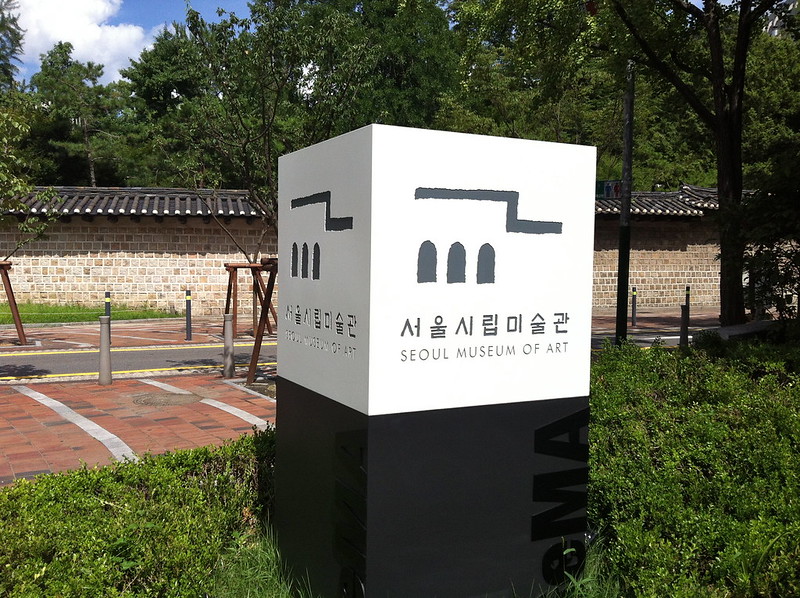
The other day I went to the Seoul Museum of Art. But how the day began was actually with an abortive attempt to go to the "National Museum of Contemporary Art" in Gwacheon (which is considered outside of Seoul, nearest station being Seoul Grand Park on Line 4, the light blue line).

There was no available parking although we had arrived there considerably early, and after some dalliances around the area (for the museum is flanked by many children/family-oriented amusements such as Seoul Land, the zoo, and some other Nature Camping grounds, we went back to town to find the considerably more accessible Seoul Museum of Art (SeMA). The weather has been brutal in Seoul with some sort of heatwave going on (36+ degrees!) so the museums are extra crowded with visitors trying to dodge the heat by staying indoors.
I realized that I had visited the SeMA two years ago and taken the exact same route around Seoul's City Hall (서울특별시청) area, and the performance of officials marching outside a then hitherto unknown palace was actually Deoksugung Palace (덕수쿵).
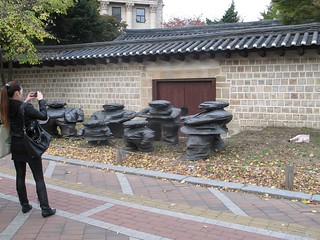
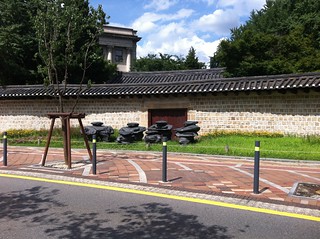
10 Nov 2009 -vs- 2 August 2012
Hidden Track
SeMA Gold 201219 June 2012 - 26 August 2012
The ground floor is host to a "Hidden Track" exhibition, to which one can obtain an English audio guide which was incredibly informative. Featuring a number of mid-career korean artists (in their 50s and 60s) and works, but without a specific theme for the works in the show, the curator's text writes: "Hidden Track is an opportunity to peep into domestic mid-career artist's "hidden desire". For the artists, hidden tracks are unnamed desires intermittently existing between their primary styles that helped them gain reputation. This desire at times works as momentum for creation, plays the role of gaining breath, or a soundless link-pin for their main styles."
The concept itself is lovely; and its starting point is asking older artists who have practiced for over 30 years, to contemplate on where they stand in the art world, how they got there (presumably by developing a distinctive style or practice), and where they could go next from there (through creating work that explores the form that they might be used to, and to create a "hidden track" between hit songs that allows one to extend on one's practice while also allowing listeners/visitors the chance to find something new.
Some of the works there are as follows:

Kim Jiwon - Some Moment (1988)
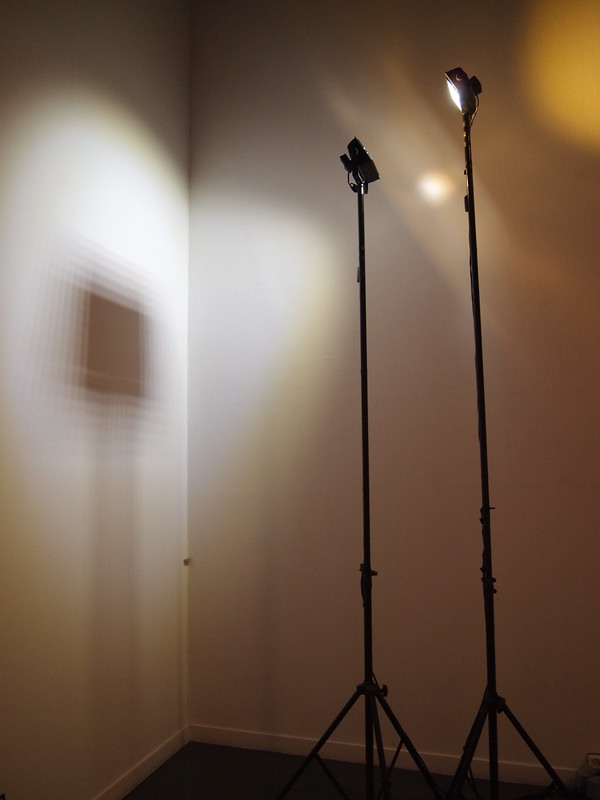
Ahn Kyuchul - In Love
The two lamps facing each other represent a boy and girl in love
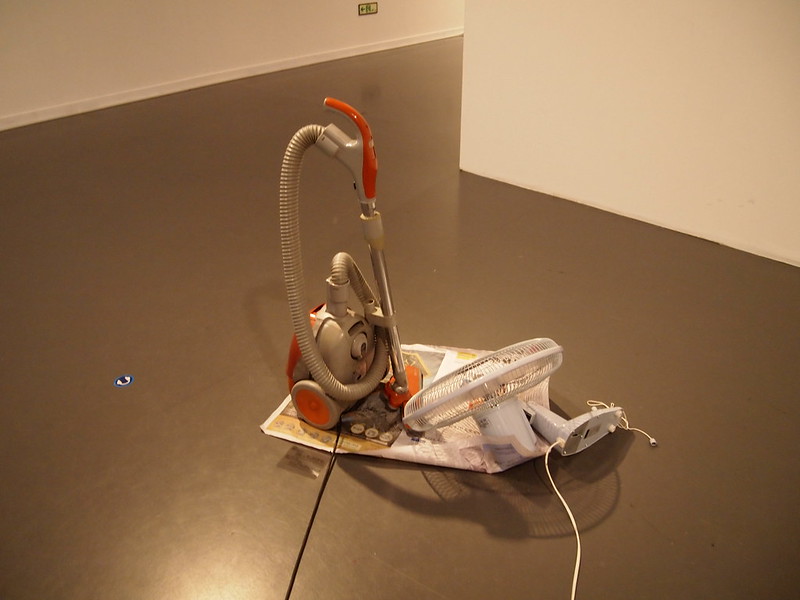
The artist's desire to suck out the events on that copy of the newspaper and to then blow it away

32 boxes containing personal effects, representing the artist who had moved 32 times
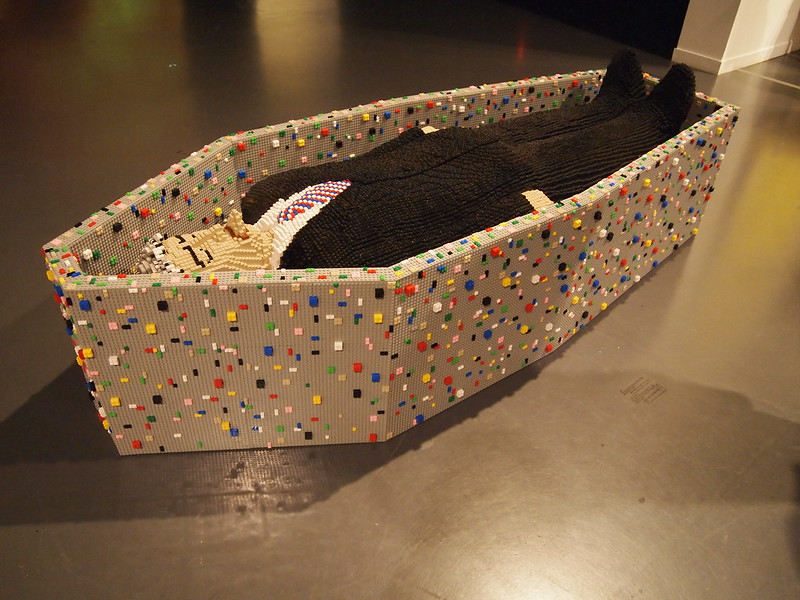
Lego man floating in Lego Coffin
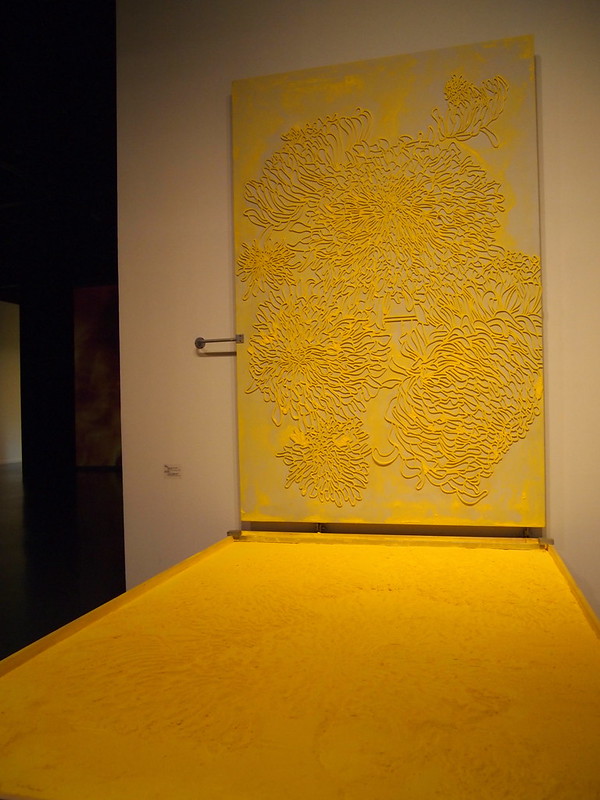
"Butterfly" dust work, where the dust is supposed to resemble the dust on a butterfly's wings
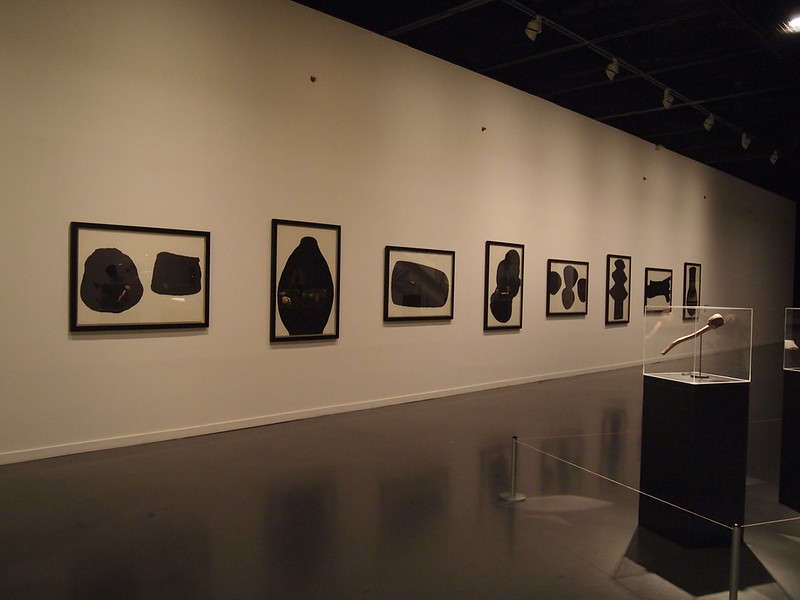
Abstract Composition with black paint on white
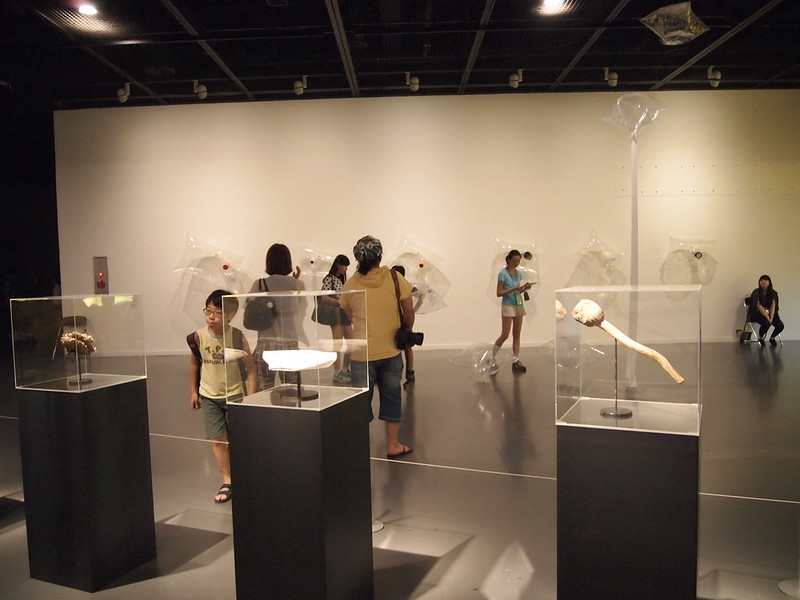
(In background) Floating objects in plastic bags as sculptural work
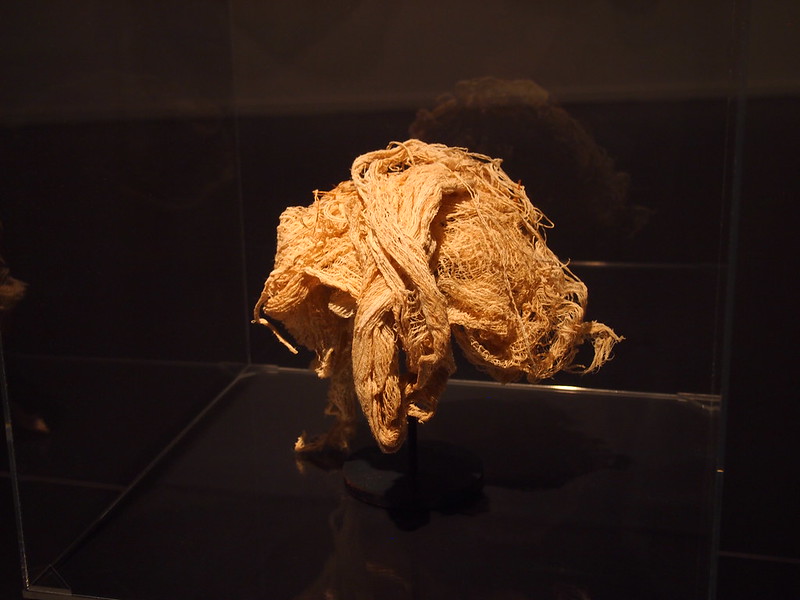
Random items framed as artifacts
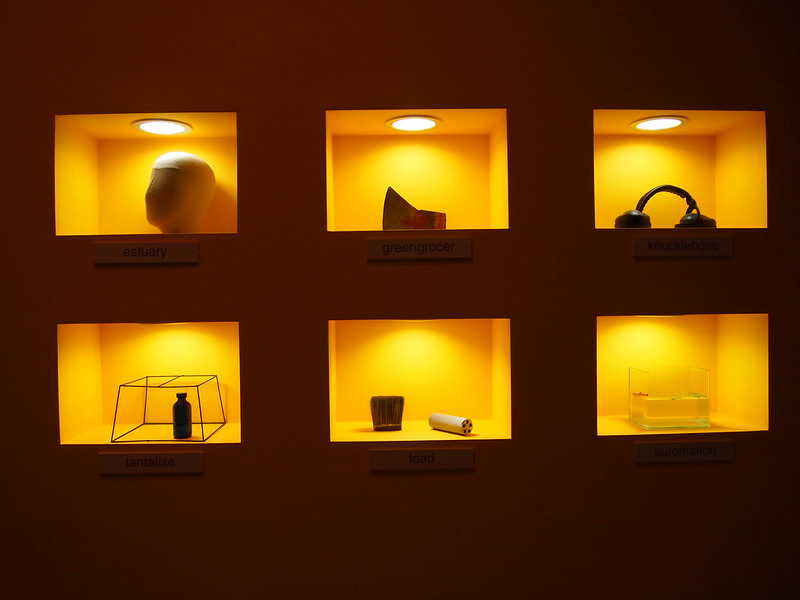
Items given nonsensical labels
I find myself drawn towards the installation or sculptural works and they certainly dominate this show. One of the works that seems pretty interesting yet peculiarly somewhat out of context is the "Star Club" at the end of the exhibition hall. From outside, one can hear loud music coming out from behind the red plush doors. When one enters, the music and light show goes on and on as if you are in a real club. All of a sudden it ends. The lights come on strong for a few seconds, and the audio guide tells me that it hopes to present that awkward moment when the club music dies down and you are suddenly in a club with all the lights on. Finally the lights go off and the glow-in-the-dark stars in the background form constellations in the background, to remind you that you are a small dot in the universe (also according to audio guide). While the intention is appreciated, and the dying down of the music and light is an interesting moment, I think the light show left one expectant for more - rather than "awkward" or feeling suddenly "abandoned" in the space - because one often goes into a gallery with the expectation of having to drift in and out of works and sometimes entering at the wrong timing.
I suppose what I mean is that its impossible to transpose a club into a gallery fully or adequately, but maybe someone should make a work about people going to see time-based or timed works at the wrong timing...?
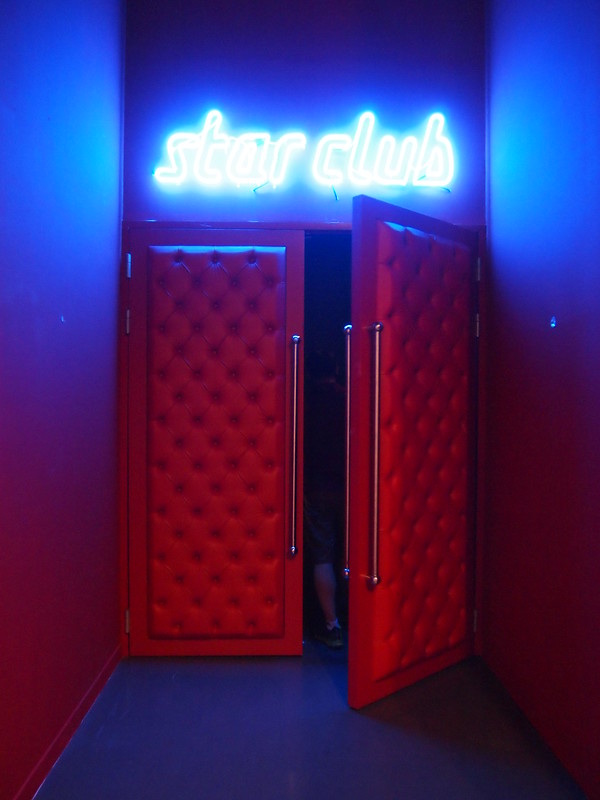
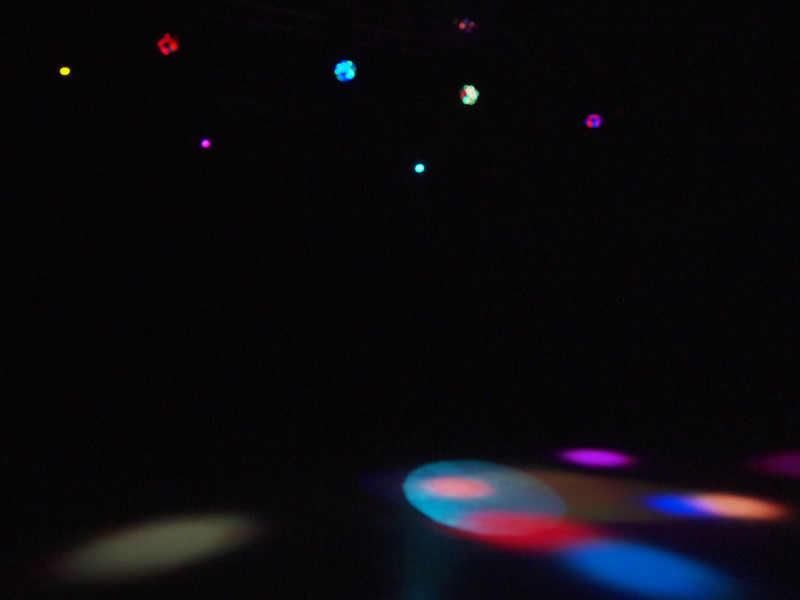
Noh Sang Kyoon - Star Club
MAPPING THE REALITIES
Mapping the Realities: Korean art in the 1970s-80s from the SeMA collectionChapter 1: Modernist Art in the 1970s
Chapter 2: Minjung Art (People’s Art) in the 1980s
19 June 2012 to 19 August 2012

On the second floor of the SeMa there is part of SeMA's permanent collection in an exhibition titled "Mapping the Realities". It also extends to the third floor. This is a collections show by SeMA with works categorized under two broad periods and some smaller themes such as Alienation, Industrialisation, Capitalism, etc.
Chapter 1: Modernist Art of the 1970s:
The first part is of Modernist art from the 70s, with a selection of monochromatic concept paintings, pop art, art publications, documentation of performances or actions, and other experimental art forms.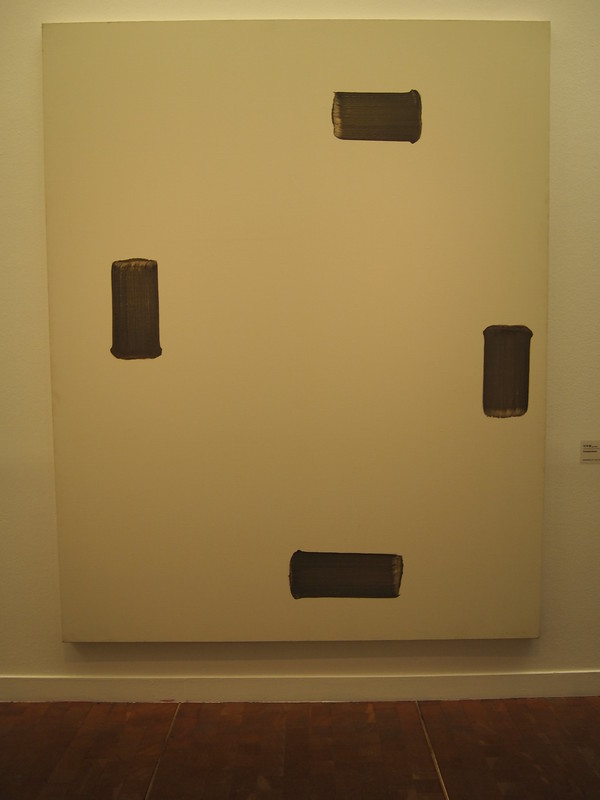
Lee U Fan - Correspondence

Ha Chong Hyun - 02-36
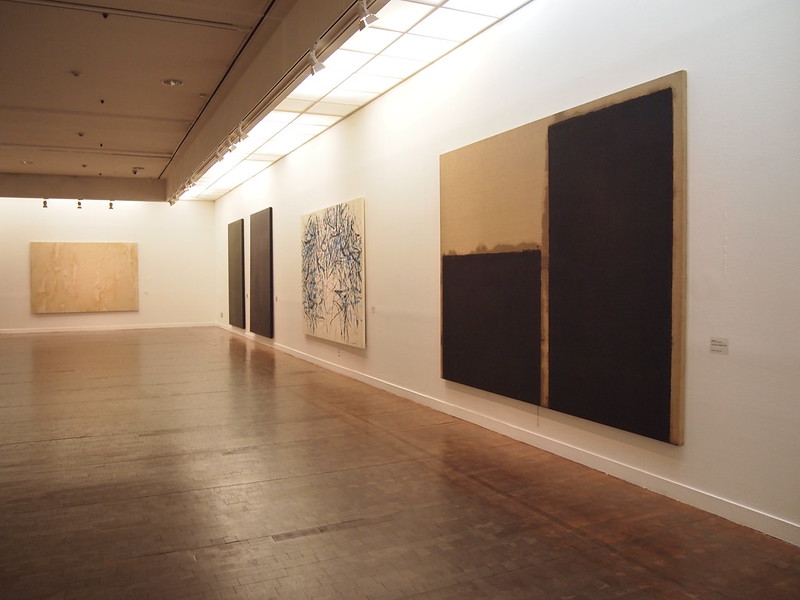
Yuh Hyong Keun - Umber Blue 77481 (work on the left side)

Other more textural work
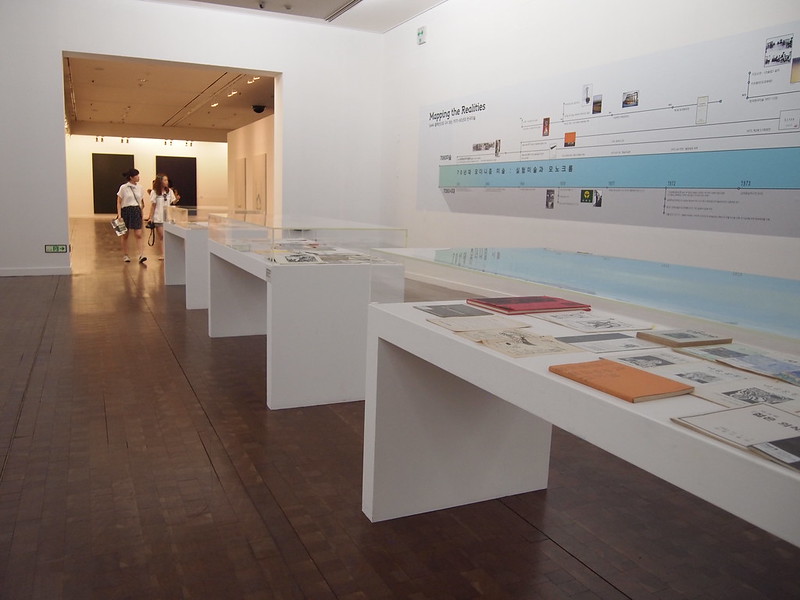
Publications and timeline (korean)
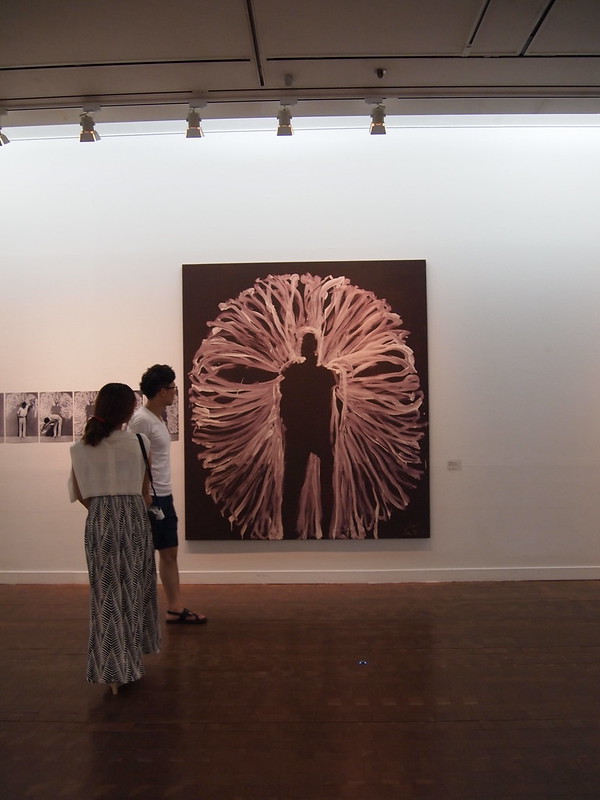

Lee Kun Yong - Process

Lee Seung Taeck - 무졔

Boy do the koreans love to take pictures. Of themselves. Of themselves in front of artwork. Of lights. Of museum equipment. Of themselves in galleries. Of their babies. Of everything. Even the children have their own phone cameras. As it is summer holidays and a heatwave all combined together, there are an unholy amount of children and families at the museums in Seoul, all taking pictures at the same time.
Chapter 2: Minjung Art (People’s Art) in the 1980s:
For me, as an english speaker and with very little english text to go by, it seemed as if there had been very little attempt to explain or map the connection of how we went from the playfulness and joie de vivre of the 70s to the sudden brutal, gruesome, flame-licked realism of the 80s. There is a perfectly good reason for this sudden flick of the switch, I am sure, and it must be related to politics and war in Korea at that period. But it seems as if they chose not to even attempt to show any continuity, or to elaborate and explain more on the change - and instead they simply broke it over two floors with the modern art below and the realist art above. Through the selection of images in the following 5 themes, the picture of Korean art is one that is strikingly realist, political/critical of politics and media, and completely ignoring and eschewing the abstract and modern art that was perceived to have come via western influences in the 80s. Note that it is capped off by a sudden return to traditional values at the end of the show, which was a little puzzling for me. I'm not entirely sure why this arrangement, but perhaps the Korean accompanying text/audioguide was more ample with its explanation than the English text...In the exhibition:
Scene 1: Criticism and the Political Art
Scene 2: Industrialisation and the Issue of Labor
Scene 3: Consumer Society and Media
Scene 4: Capitalism and Human Alienation
Scene 5: Traditional Values and Mass Production
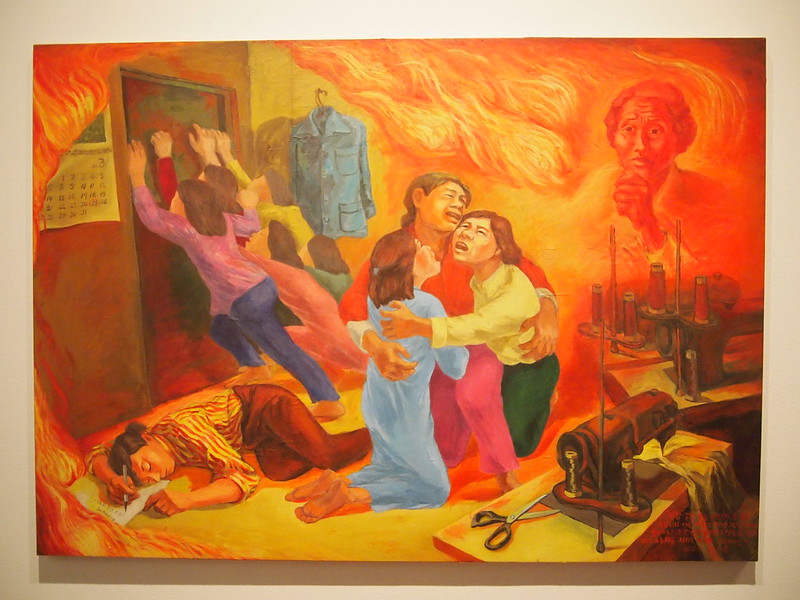

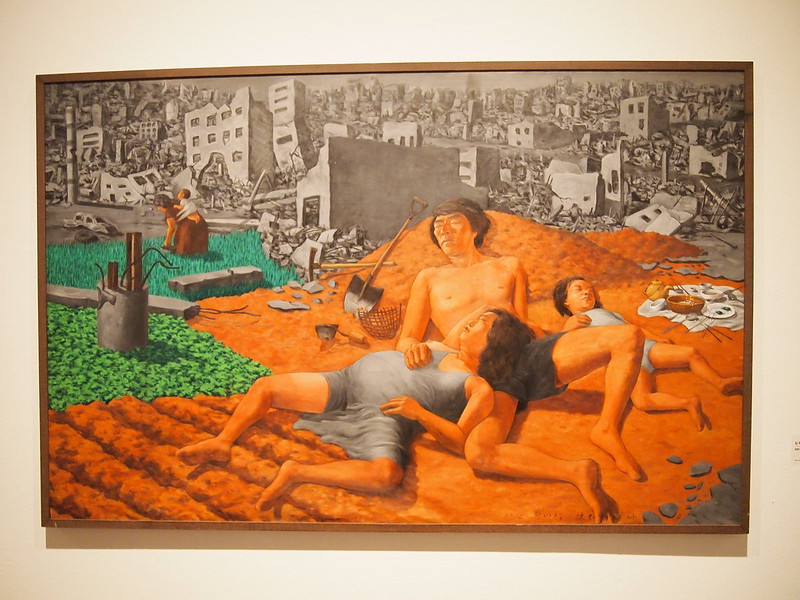
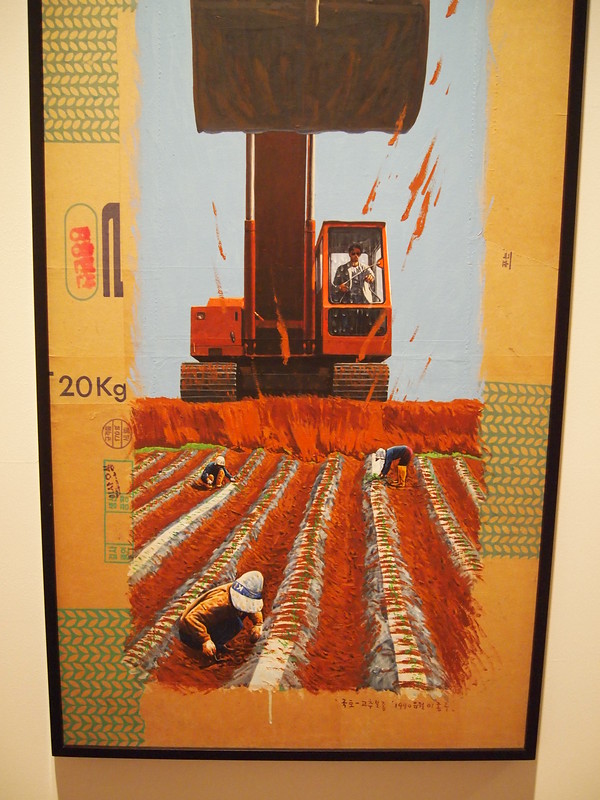
I am not so much a fan of social realism so I just skimmed through all this. So of note is not really the art but of a situation where a small child became fascinated with a kafkaesque sculpture of a man gazing through a door resembling his own shadow folded back on itself. The child wanted to touch the man on the other side but the parents and museum staff were there to prevent that from happening.

There was also more across a corridor, these are the media/consumerism related works.

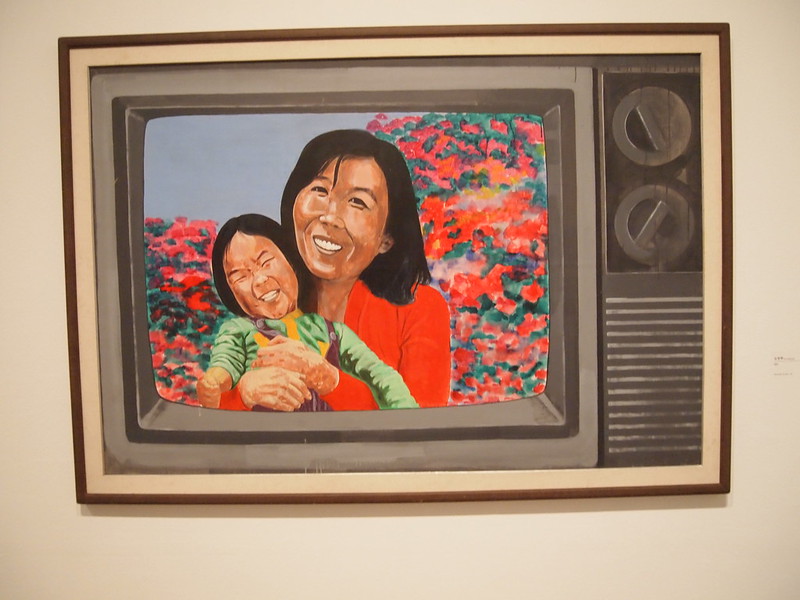
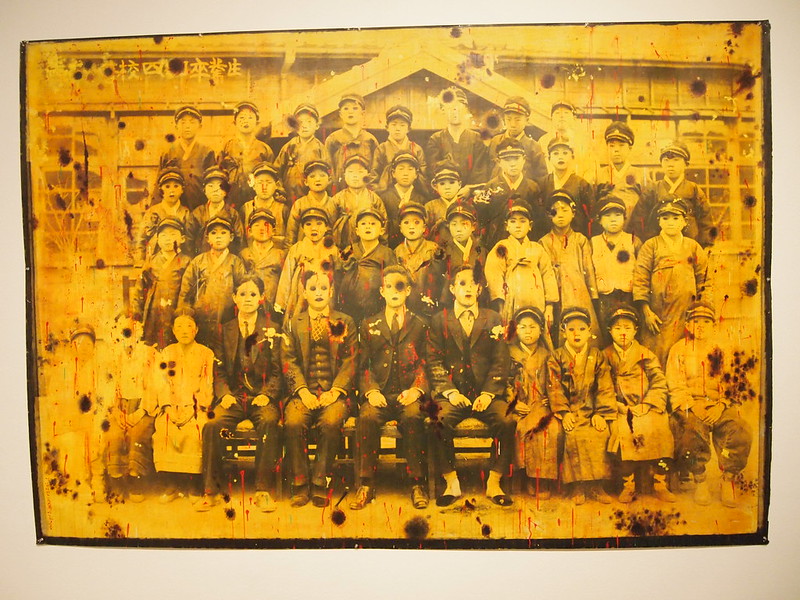
Move on Asia
Finally at the top floor there is a small room where they are showing film works: Apichatpong Weerasethakul's Phantoms of Nabua (a short film about lights and fire), Ho Tzu Nyen's Cloud of Unknowing which have I have meaning to see and finally got to see in its entirety here, Song Dong's sculptural "Eating Landscape" piece with fish heads and meat and a poem in the background ("eating for nothing, don't eat also wasted"), and Yang Fudong's puzzling "The Half Hitching Post" short about two fully suited chinese men wandering lost in rural china (which was slightly marred by poor sound production or playback that made it even more confusing actually).
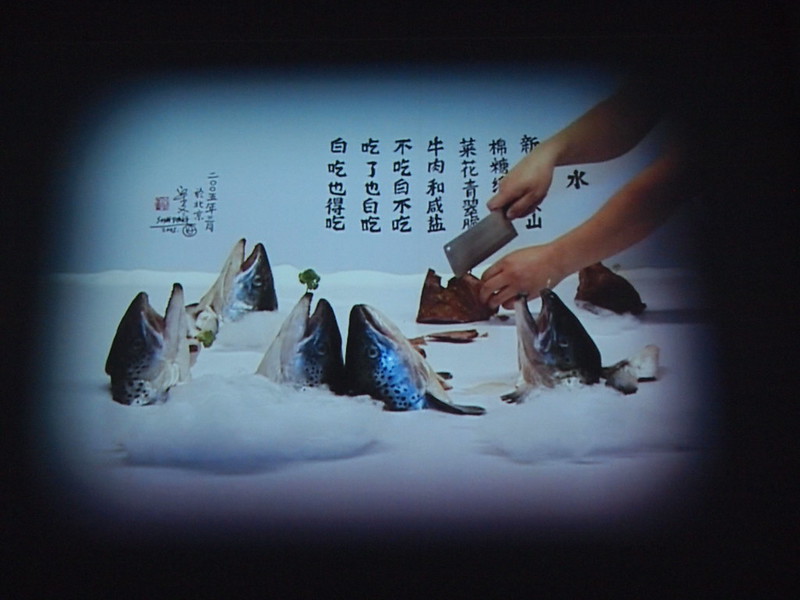
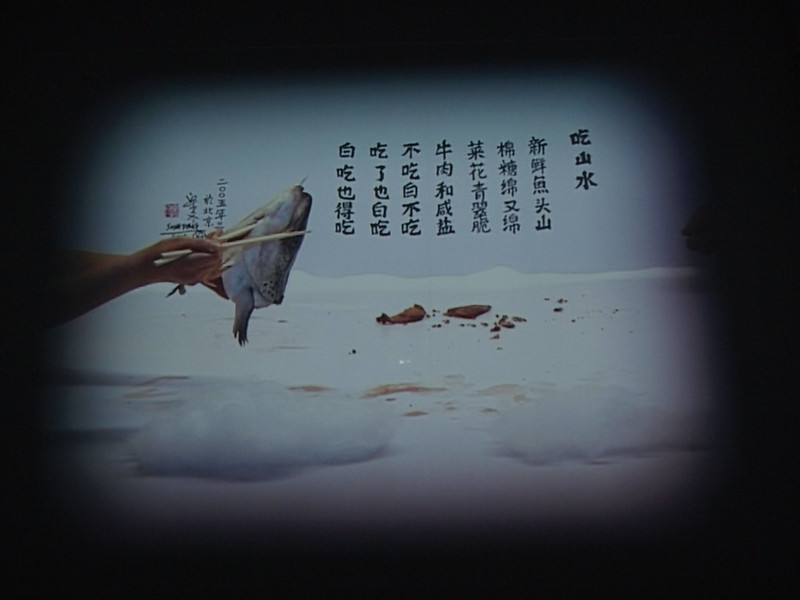
Eating Landscape, 2005, 7 min 7 Sec (Song Dong)

Cloud of Unknowing, 2010, 28 min (Ho Tzu Nyen)

Yang Fudong
Permanent Collection: The Soul of Chun Kyung-Ja
Finally the permanent collection features an exhibition that I also saw back in 2009 or 2010. "The Soul of Chun Kyung-Ja" is a exhibition of small works by a painter/translator/writer who travelled extensively and also painted on her travels in a distinctive style with strong lines and bright colours.
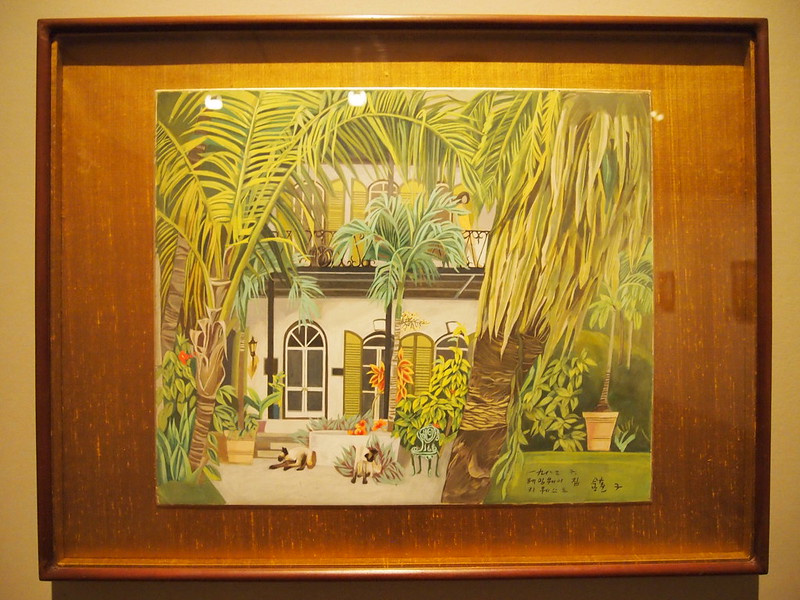
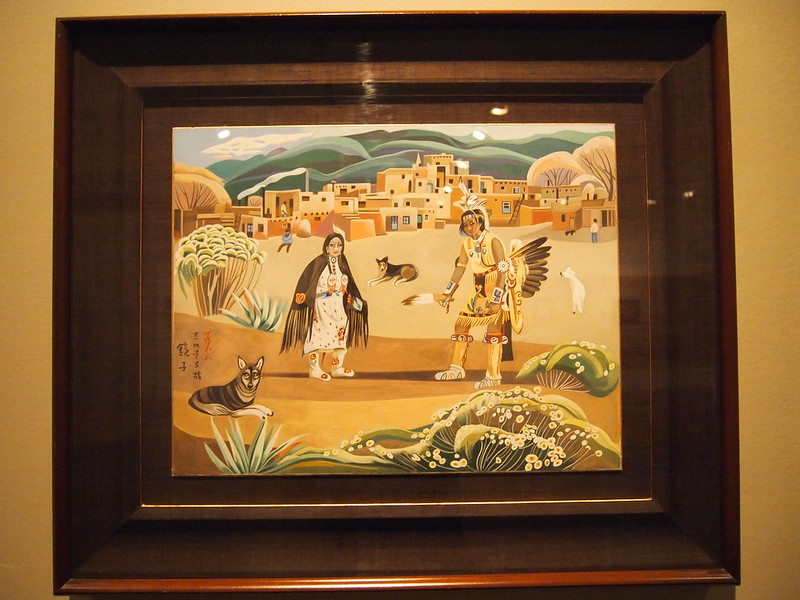
Travelling as an "artist" to make work in a foreign country, I also wonder how precisely the travelling changes my work or how much of the new place I should integrate into my work. Since I make place-based work, the location matters to me. I suppose I think of these residencies and trips as research trips in which I gather information. Another thing that just occurred to me during this trip to the SeMA is that with my fondness for works about narratives, I have a feeling that somewhere further down the line I will end up working with film as a medium as well.
No comments:
Post a Comment